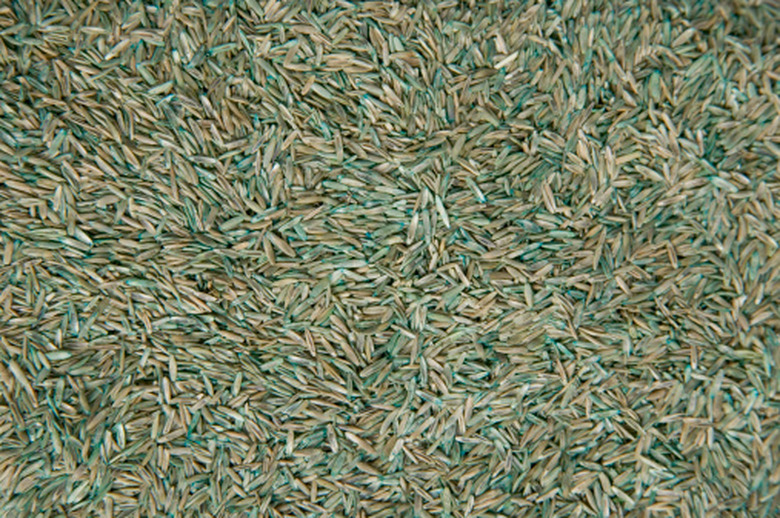How To Cover Grass Seed With Peat Moss
Peat moss is a soil conditioner made from decomposed sphagnum moss. It's clean, sterile, acidic and able to retain moisture without becoming too heavy. Often combined with soil, peat moss helps plants retain nutrients. But why use it to cover grass seed? In addition to creating a healthy plant growth system, peat moss can help protect seeds from animals. Seeds can, after all, look rather tasty to a bird. And unlike other materials used to cover grass seed, such as straw, peat moss doesn't contain any weed seeds and is cost-effective for covering large areas.
What Is Peat Moss?
Peat moss is a growing medium that regulates a plant's conditions by helping it retain moisture and oxygen. To give you an idea of exactly how much water it can hold, peat moss can hold up to 20 times its weight in moisture without becoming too waterlogged. Another benefit of peat moss is that it is acidic and can be used to lower the pH of alkaline soils.
While peat moss is excellent for holding water and improving your soil, it's not the most environmentally sound medium, as it's not renewable. Popular alternatives to peat moss, if you're concerned about its environmental impact, include compost, coconut fiber and pine bark.
Why Apply Peat Moss?
It's established that peat moss can create a better growing environment for your plants, holding in moisture for adequate germination, but why use it over grass seed? For starters, a light covering of peat moss can protect your lawn from birds who love to feast on seeds. It might also safeguard the seeds from elements such as heavy rain and wind that can sweep or wash them away. Want to better ensure the seeds are held in place? Keep the peat moss moist.
Things Needed
How to Use Peat Moss
1. Add Peat Moss Topdressing
This step generally follows sowing and rolling the seed. After spreading the seed and pressing it into the soil with a lawn roller, you should add a topdressing of peat moss. To do this, add about 1/8 inch of peat moss over the seeded area. You can use your compost or peat moss spreader to distribute the peat moss.
2. Water the Planting Area
Watering is considered the most important step for proper germination. It requires striking a balance that keeps you from over watering or under watering. The first time you water the planting area, apply water until it begins to puddle. Keep the soil moist by watering frequently in short intervals. You'll know its time for another watering when about two-thirds of the planting area soil dries and becomes lighter in color.
3. Protect and Cultivate
Now that you've planted the grass seed, applied the peat moss and watered the planting area, you'll want to make sure the area's blocked off and protected from anything that can trample the newly seeded lawn. Continue to care for the grass by watering it at the proper intervals even after germination, which could begin as soon as five days after planting. When grass reaches about 1 inch in height, water once a day.
